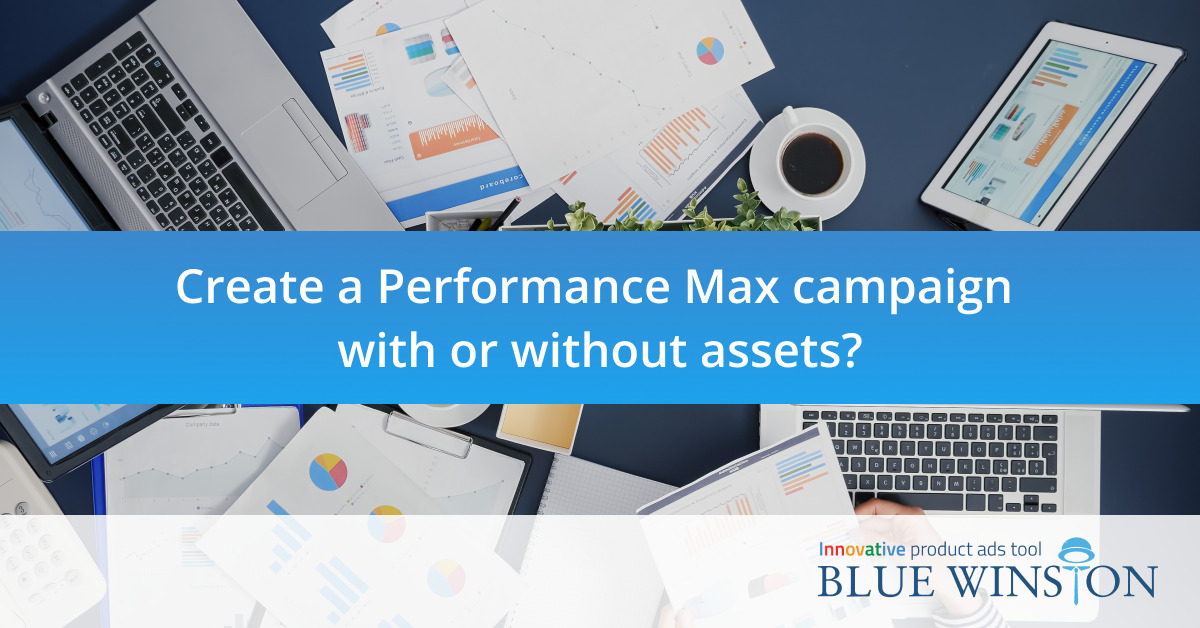In this article, we will delve deeper into the Performance Max campaigns (abr. P. Max) and the use of assets in them. This is most of all related to the optimization of the P. Max campaigns, especially when you have a limited budget and want to achieve the best possible performance of the campaign.
What are the assets in Performance Max campaigns?
Assets in P. Max campaigns represent the e-shop logo, images, texts, YouTube videos, and much more. You can add specific texts as headlines and descriptions, and also product images so that they can be served to broader audiences.
Subsequently, Google will display your ads on all Google networks. The point is that in some networks (e.g. in the Display Network) clicks may be cheaper than in the Search Network and this can result in lower cost per conversion.
Google recommends filling in all assets in Performance Max campaigns
Google recommends that you fill in all available assets in each P. Max campaign. This is so that the campaign can subsequently be displayed on all Google networks. Google can thus reach significantly more users and bring conversions from several networks while respecting the chosen bidding strategy.
At the same time, Google recommends that you put higher budgets into Performance Max campaigns since the campaigns will then gather data faster. And based on the data, Google can optimize the given campaign according to the selected bidding strategy (e.g. Maximize Conversion Value).
What if you have a limited budget for the Performance Max campaign?
Quite often it happens that e-shops only have a limited budget available for the P. Max campaigns (e.g. 10 to 20 € per campaign per day). We encounter this mainly with smaller and medium-sized e-shops that have launched one or several P. Max campaigns.
In the case of small budgets, several problems can occur, such as the following:
1. Adding assets will create a YouTube video and start displaying banners on the Google display network. This way the advertisement for the given product will be displayed on several networks and will have little data on each of them.
2. After filling out the assets, the campaign will be displayed on several Google networks and it is impossible to find out from which network the order came.
3. Without filling in the assets, the P. Max campaign will display the ad only in Google search and thus you are only reaching users who have actively searched for the given product.
4. When you have a smaller budget, the algorithm in P. Max campaigns works in a limited way. With a small budget, it cannot find quality users in all networks, ergo it collects small amounts of data for each individual product. This is why it could be probably better to focus your budget only on Shopping ads on Google search.
5. You should always choose the most adequate bidding strategy for P. Max campaigns! Right now you can choose between Maximize conversion value and Maximize conversions.
- With the strategy Maximize conversion value, Google will mainly display more expensive products to achieve a bigger sale value.
- With the strategy Maximize conversions, Google will prefer cheaper products to sell as many products as possible.
Creation of Performance Max campaigns without assets
Currently, it is possible to create P. Max campaigns without assets through BlueWinston, so you can focus your advertising only on Shopping ads in Google search (this is very similar to how the Smart Shopping campaigns worked). By doing this, you can get better results (better ROAS or lower ACOS).
However, it must be said that PMAX campaigns without assets will probably only be available for a certain period of time. We assume that after all migration from Smart Shopping to P. Max campaigns is done the next step that we could expect would be “assets must be filled for the campaign to work properly” or something similar.
Creation of Performance Max campaigns with assets
Of course, you can create P. Max campaigns with assets and thus reach a wider audience. In this case, we recommend higher budgets (at least €30 per campaign per day) in order to collect data from several Google networks quickly enough.
In BlueWinston, you can create P. Max campaigns with assets. Similarly like in Google Ads you can add e-shop logos, YouTube videos, images, texts, etc.
Conclusion
It is up to you whether you want to run P. Max campaigns with or without assets. You can try it without assets first, and if your daily budget is not running out, you can then add assets as well. You should compare the performance of the campaign before and after adding the assets so that you have a clearer picture of what was going on burning that change.
You can also use advanced product filtering in BlueWinston, e.g. according to prices, margins, categories, brands, etc. Once a campaign is running and collecting data, you can pause underperforming products as needed, either individually or in bulk. For example, according to low ROAS or high CPA for individual products.





